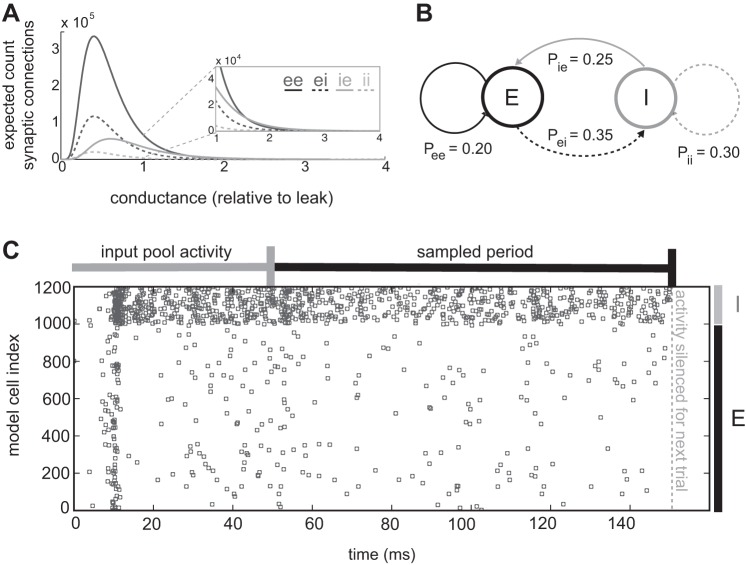Fig. 1.
Conductance-based integrate-and-fire network with cell-type-dependent connectivity. A: synaptic weights were drawn from a lognormal distribution, with inhibitory-excitatory (ie) conductances scaled 150% relative to other connections. Excitatory connections to other excitatory cells were most numerous and were isolated as the focus of this study. B: 2 populations of integrate-and-fire units with conductance-based synapses, excitatory (black) and inhibitory (gray), were connected sparsely and randomly. Connection probabilities were determined by source and target identity [e.g., individual inhibitory projections to excitatory cells existed with probability of an i unit impinging on an e unit (Pie) = 0.25]. C: a single simulation epoch of model network activity showing both excitatory and inhibitory spiking. The network was activated via input units firing Poisson spikes at 15 Hz, connected randomly to the excitatory population. After 50 ms, input activity was silenced, and network activity progressed in isolation. During this period, activity was recorded from the excitatory population.

